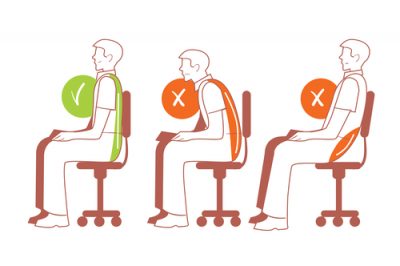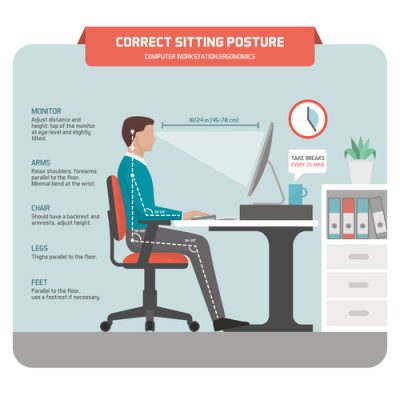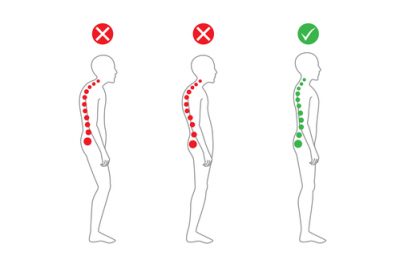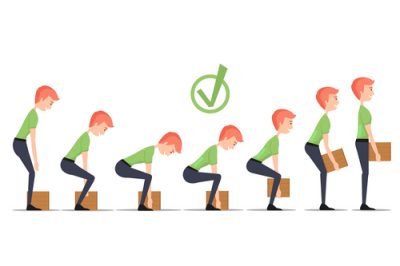Wellness Tips
 Good posture while sitting is very important as many of us sit for long periods of time for work. It is just as vital that our work or study space at home is ergonomically correct since many of us are now working or doing on line classes at home.
Good posture while sitting is very important as many of us sit for long periods of time for work. It is just as vital that our work or study space at home is ergonomically correct since many of us are now working or doing on line classes at home.
When we sit, our feet should be flat on the floor and our thighs should be parallel to the floor. Sit all the way back in the chair and if possible, the back rest and base should be locked so you can lean back into the seat. Having a chair with great lumbar support does not help if your back doesn’t touch the seat back. Sit up straight with your shoulders back and your head in a neutral position (ear over the shoulder).
 Computer Use – The monitor should be at eye level and directly in front of you. The keyboard should be set so you do not have to reach for it and your arms and wrists are in a neutral position. If your chair has arms on it this means you should be able to slide the chair forward under the desk or table without having to reach to access the keyboard or mouse. A laptop should not rest on your legs but be raised up or on a table or desk to accommodate the above position. Proper sitting posture noted above should be maintained. Take breaks every 30-40 minutes to minimize fatigue.
Computer Use – The monitor should be at eye level and directly in front of you. The keyboard should be set so you do not have to reach for it and your arms and wrists are in a neutral position. If your chair has arms on it this means you should be able to slide the chair forward under the desk or table without having to reach to access the keyboard or mouse. A laptop should not rest on your legs but be raised up or on a table or desk to accommodate the above position. Proper sitting posture noted above should be maintained. Take breaks every 30-40 minutes to minimize fatigue.
Telephone Use – If your job requires you to talk on the phone a lot, consider using a headset or speaker phone if possible. Avoid clamping the phone between your ear and shoulder to perform other tasks while on the phone.
 Standing posture can be accessed from the front with a full length mirror and from the side with some help.
Standing posture can be accessed from the front with a full length mirror and from the side with some help.
Looking in a mirror from the front, imaginary lines drawn across your hips, shoulders, and ears should all be parallel to the floor.
Looking from the side, a straight perpendicular line should go from ear, shoulder, hip, knee, to slightly in front of your ankle.
If the lines are not parallel or the side view is not aligned, it can indicate an underlying imbalance that should be checked by a health care professional.
 Place your feet shoulders width apart in an athletic stance. Have the object you’re lifting in close so you’re not reaching out away from your body. Lift with your legs keeping your back straight.
Place your feet shoulders width apart in an athletic stance. Have the object you’re lifting in close so you’re not reaching out away from your body. Lift with your legs keeping your back straight.
 You should sleep on your back or side, never on your stomach. Use one pillow under your head. If you have lower back pain, try sleeping with a pillow between your knees on your side or under your knees on your back.
You should sleep on your back or side, never on your stomach. Use one pillow under your head. If you have lower back pain, try sleeping with a pillow between your knees on your side or under your knees on your back.
Check your mattress for visible sagging and replace after 15-20 years as needed. Pillows should be replaced every few years.
